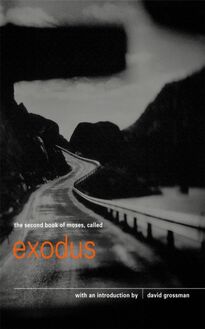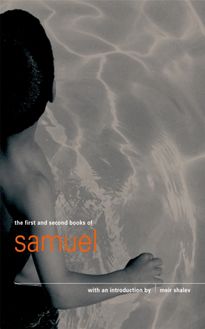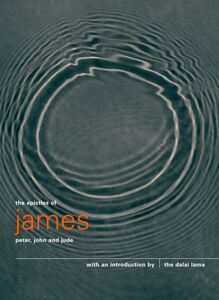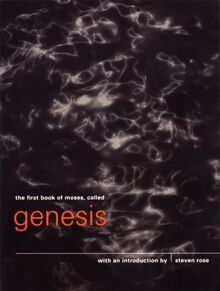Gospel According to John , livre ebook
44
pages
English
Ebooks
1999
Vous pourrez modifier la taille du texte de cet ouvrage
Obtenez un accès à la bibliothèque pour le consulter en ligne En savoir plus
Découvre YouScribe et accède à tout notre catalogue !
Découvre YouScribe et accède à tout notre catalogue !
44
pages
English
Ebooks
1999
Vous pourrez modifier la taille du texte de cet ouvrage
Obtenez un accès à la bibliothèque pour le consulter en ligne En savoir plus
Publié par
Date de parution
01 janvier 1999
Nombre de lectures
3
EAN13
9780857860996
Langue
English
Poids de l'ouvrage
1 Mo
Publié par
Date de parution
01 janvier 1999
EAN13
9780857860996
Langue
English
Poids de l'ouvrage
1 Mo
Contents
Title Page a note about pocket canons introduction by blake morrison the gospel according to st john 2 3 4 5 6 7 8 9 10 11 12 13 14 15 16 17 18 19 20 21 about the author Copyright
a note about pocket canons
The Authorised King James Version of the Bible, translated between 1603–11, coincided with an extraordinary flowering of English literature. This version, more than any other, and possibly more than any other work in history, has had an influence in shaping the language we speak and write today. Presenting individual books from the Bible as separate volumes, as they were originally conceived, encourages the reader to approach them as literary works in their own right.
The first twelve books in this series encompass categories as diverse as history, fiction, philosophy, love poetry and law. Each Pocket Canon also has its own introduction, specially commissioned from an impressive range of writers, which provides a personal interpretation of the text and explores its contemporary relevance.
introduction by blake morrison
From the age of eight to fifteen, I spent every Sunday morning in the choirstalls of an English village church. To be in the choir didn’t require singing talent. You just turned up each week and stood there, like something out of Thomas Hardy, raising a song in praise of God, to the accompaniment of a wheezing organ. Our predecessors in the graveyard had done the same. The dusty black cassocks and white surplices waiting for us on pegs in the vestry – they had worn them, too. The choir was small, just six or eight, all children, most of them present under parental duress. With me, it was different: my father was an atheist, my mother an Irish Catholic, and I’d had to fight to join up. It was not that I had a sense of calling. It was simply a way of getting to see my friends on Sunday. We weren’t always well-behaved. Gum was surreptitiously chewed during prayers, then deposited in sticky balls and left to harden. Cruel names were invented for those in the paltry congregation. Whispering and giggling were routine. Still, until confirmation (which for me confirmed doubts, not faith) we kept coming. And though I’m no church-goer now, those Sundays will always be part of me. The touch of cold stone flags on a bended knee; the lovely sound of ‘daily bread’ and ‘trespasses’; the melting nothingness (neither flesh nor manna) of a communion wafer; the head-swoon from a sip of wine; the rotting-body smell from water that stood too long in flower-vases; the whitewash walls, the spread-winged golden-eagle lectern stand, the pale-lemon morning light, the wood of the nave so dark it might have been burned – the hours of boredom have long faded, but the sensuousness has stayed.
The Gospels have stayed, too, the miracles and sayings and Passion. To begin with, I preferred the Old Testament, which read like a boy’s adventure story spanning several generations: Noah’s flood, David’s slingstone, Daniel in the lion’s den, Moses in his basket, the parting of the Red Sea. Jesus had adventures, too, but you’d not have known it from the face in the stained-glass windows. He looked wan, frozen and passive, too pious for his own good – someone who’d change wine to water, not the other way about. The only impressive thing about him was that it had taken four men to tell his tale. Matthew, Mark, Luke and John: the names sounded familiar, reassuring, trustworthy, and it didn’t seem surprising that their stories should vary – when my friends and I related the same events, didn’t our versions vary, too? As years passed in the choir-stalls, I became more interested in the Apostles, and tried to put faces to their names. John was the hardest to visualise. He was said to be the son of Zebedee, ‘the beloved disciple’, but this didn’t help much. All I did dimly perceive was that he was the odd one out.
At fifteen, I swapped the Apostles for another Fab Four, the Beatles, whose John was likewise the outsider. Soon enough, the phrase ‘gospel truth’ had a hollow ring for me – I was discovering stranger, more various truths through drink, drugs, girls, music, the mystic east. The only lingering affection I felt for the c of e came from thinking of Jesus’s story as myth or legend – literary fiction, not monotheistic truth. The idea that the Apostles were contemporaries of Christ, writing factual first-hand reports, seemed ridiculous. But once I thought of them as storytellers, drawing on oral tradition, their gospels became more interesting. They were pedagogues, trying to convince others to follow their faith. But they were also, at least in the Authorised Version, hauntingly imaginative writers, John above all.
The literary status of the gospels, the identity of their authors, the degree of historical truth they impart – these are matters scholars debate to this day. Agreement is rare, but one can glimpse a consensus of sorts on several points.
A man called Jesus did live and preach in Palestine shortly after the time of King Herod’s death; a radical thinker and militant leader, he ran into trouble with the authorities and was put to death.
Matthew, Mark, Luke and John wrote their gospels late in the first century, perhaps drawing on eye-witness accounts that had been passed down: their names were assigned to the Gospels only around 180 ad, and they probably worked closely with other Christian opinion-formers, in effect as editorial teams.
Each gospel went through several versions, perhaps as many as five, building up from sayings and sermons through ‘peri-copes’ (teaching or episodic units) to full-blown narratives.
Their purpose was to proclaim the ‘good news’ of Jesus’s life, through accounts of his story and teachings: ‘these are written, that ye might believe that Jesus is the Christ, the Son of God; and that believing ye might have life through his name’ ( John 20:31).
Mark was the first gospel to be composed and John is probably the last.
The apparently late composition of John’s gospel is one of several reasons why it’s often treated as marginal and inferior. Its resemblance to Mark (and Luke ) suggests that, if not directly dependent on them, it drew on the same sources for episodes such as the walk on the lake, the feeding of the 5,000 and the miraculous draught of fishes. The chronology of the first three (‘synoptic’) gospels coincides to a very large degree, whereas John (’the fourth gospel’) differs in suggesting that Jesus’s ministry lasted over three Passovers, not one, and in putting the scourging of the Temple episode early on. The synoptic gospels are also fairly consistent about the teachings of Jesus, whereas what he preaches in John shows the influence of later schools of thought, including the Hellenistic and the Hermetic. Many commentators find the structure of John dislocated and suggest an alternative arrangement of the chapters. All in all, as E P Sanders puts it in his study The Historical Figure of Jesus , ‘The synoptic gospels are to be preferred as our basic source of information about Jesus.’
What claims can be made for John , then? First, it is the most poetic of the gospels. Compare the various openings. Matthew begins with a dull, Old Testament-like genealogical table: ‘Abraham begat Isaac; and Isaac begat Jacob; and Jacob begat Judas’, etc. Mark goes in for skittish anecdotes and dress-notes about John the Baptist: ‘John was clothed with camel’s hair, and with a girdle of skin’. Luke writes in drab bureaucratese to Theophilus, the recipient of his missive: ‘Forasmuch as many have taken in hand to set forth in order a declaration of those things which are most surely believed among us …’ By contrast, John opens with one of the greatest passages of poetic prose in the language, philosophically dense, metaphorically rich and rhythmically lucid at the same time:
In the beginning was the Word, and the Word was with God, and the Word was God. The same was in the beginning with God. All things were made by him; and without him was not any thing made that was made. In him was life; and the life was the light of men. And the light shineth in darkness; and the darkness comprehended it not … And the Word was made flesh, and dwelt among us (and we beheld his glory, the glory as of the only begotten of the Father), full of grace and truth. (1:1–5, 14)
John is thick with symbols and incantations: light, darkness, bread, water, flesh, word. It’s also full of lines that have gone into the language: ‘God so loved the world, that he gave his only begotten son …’; ‘Rise, take up thy bed, and walk’; ‘He that is without sin among you, let him first cast a stone at her’; ‘I am the good shepherd’; ‘I am the resurrection, and the life’; ‘The poor always ye have with you’; ‘In my father’s house are many mansions’; ‘Greater love hath no man than this, that a man lay down his life for his friends’; ‘Put up thy sword into thy sheath’; ‘What I have written I have written’. Part of what makes John special is that it uses metaphors where the other Gospels use similes . ‘Destroy this temple,’ Jesus tells the Jews, speaking not of their temple but his body, ‘and I will raise it up’ (2:19). ‘Whosoever drinketh of this water shalt thirst again,’ he tells the woman of Samaria by her well, ‘but whosoever drinketh of the water that I shall give him shall never thirst’ (3:13–14). ‘I have meat to eat that ye know not of,’ he tells his disciples, ‘… my meat is to do the will of him that sent me’ (4:32–4). Or again to his disciples: ‘I am the bread of life: he that cometh to me shall never hunger …’ (6:35). Or again: ‘I am the light of the world’ (8:12). Or: ‘I am the true vine, and my Father is the husbandman’ (15:1).
Metaphors aren’t always easy to understand. They trouble the literal-minded. Jesus causes this trouble. One of the themes of John’s gospel is the difficulty people have in communicating with one another . Jesus’s protr














